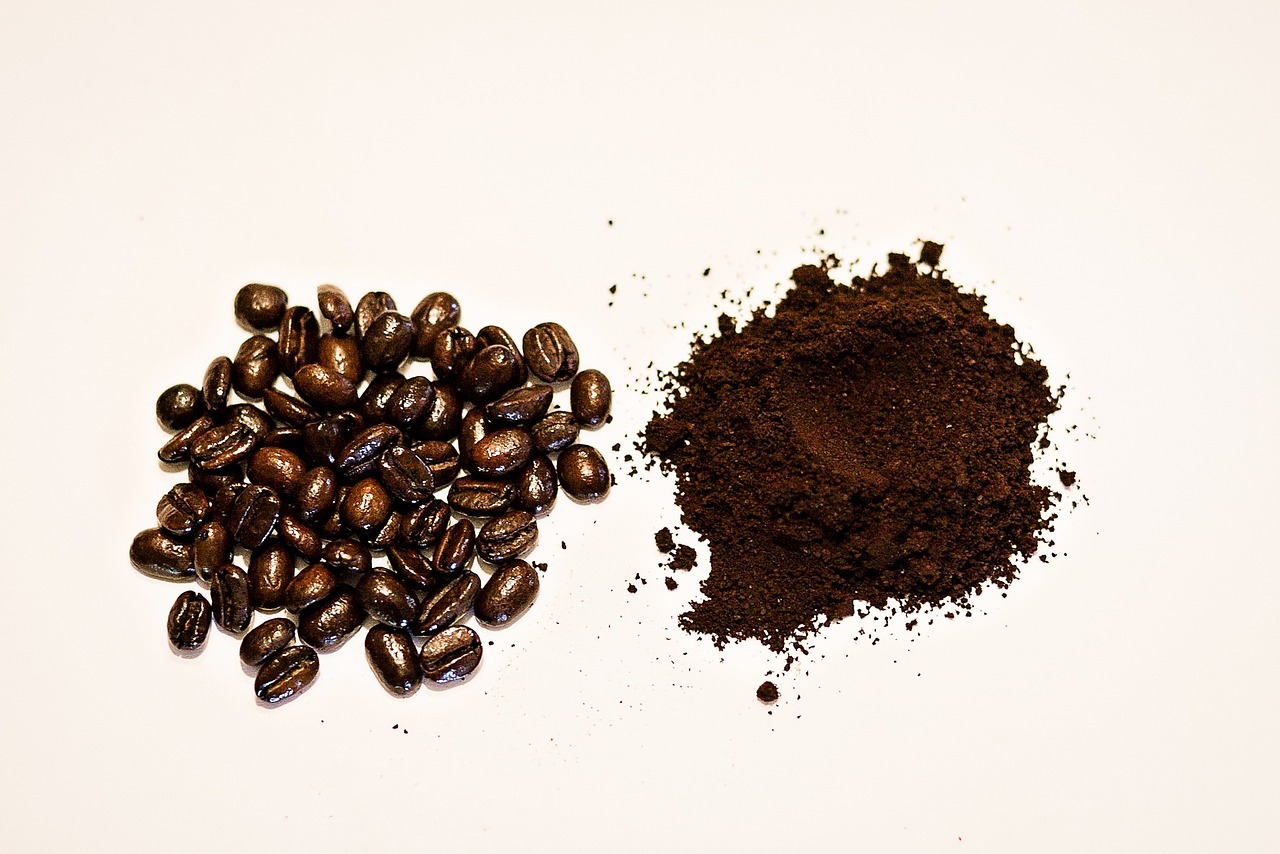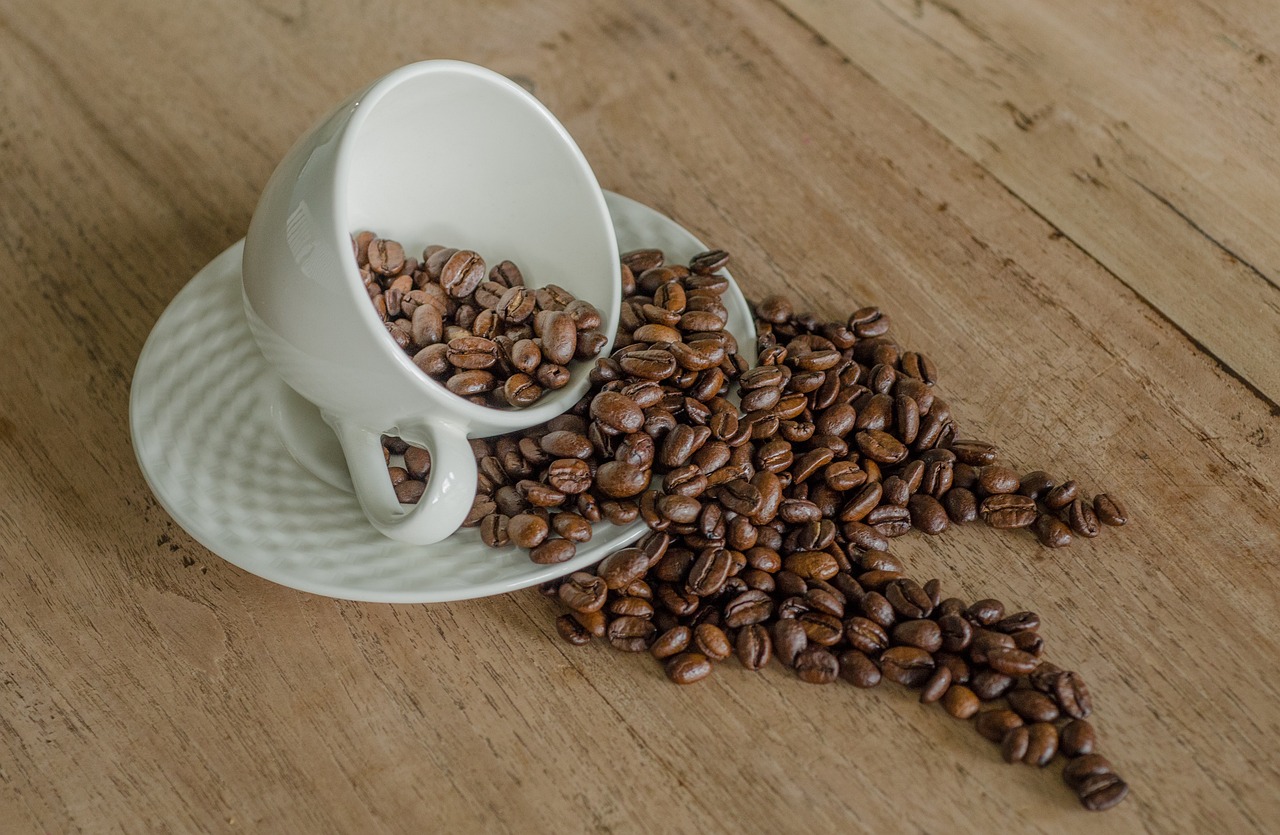Coffee lovers rejoice! We are here to talk about one of the most delightful experiences in the world of coffee – grinding your own coffee beans. There is an incredible joy that comes from taking those fresh, aromatic beans and turning them into a finely ground powder that will ultimately become a rich and flavorful cup of coffee. Forget about pre-ground coffee, for there is something incredibly satisfying about controlling the whole process from start to finish. So, grab your favorite beans, dust off that trusty grinder, and join us on a journey into the wonderful world of grinding your own coffee beans.
Benefits of Grinding Your Own Coffee Beans
Freshness and flavor
When it comes to coffee, freshness is key. Grinding your own coffee beans allows you to experience the full flavor and aroma that coffee has to offer. Pre-ground coffee loses its freshness and flavor much more quickly than whole beans. By grinding your own beans just before brewing, you ensure that you’re getting the freshest cup of coffee possible.
Control over grind size
Different brewing methods require different grind sizes. When you grind your own coffee beans, you have complete control over the coarseness or fineness of the grind. This allows you to tailor the grind size to match your preferred brewing method, whether it’s espresso, French press, pour-over, or cold brew. Having control over the grind size ensures optimal extraction and a delicious cup of coffee every time.
Unlocking the full potential of coffee beans
Coffee beans are complex and unique, with their own distinct flavors and characteristics. By grinding your own coffee beans, you have the opportunity to fully explore and experience the nuances and complexities of different coffee varieties. Each coffee bean has the potential to offer a rich and unique flavor profile, and grinding your own beans allows you to unlock and savor those flavors.
Choosing the Right Coffee Grinder
Blade grinder vs burr grinder
When it comes to choosing a coffee grinder, you’ll often come across two main types: blade grinders and burr grinders. Blade grinders use spinning blades to chop the coffee beans, resulting in an uneven grind. Burr grinders, on the other hand, use two abrasive surfaces to crush the beans evenly. While blade grinders are more affordable, burr grinders offer a much more consistent grind and are generally preferred by coffee enthusiasts.
Manual grinder vs electric grinder
Another consideration when choosing a coffee grinder is whether to opt for a manual grinder or an electric grinder. Manual grinders require hand-cranking, which can be a bit more labor-intensive, but they often provide more precise control over grind size. Electric grinders, on the other hand, are convenient and quick, but may lack the fine-tuned adjustments that manual grinders offer. It ultimately comes down to personal preference and the level of control you desire.
Considerations for your budget
When choosing a coffee grinder, it’s important to consider your budget. Blade grinders are typically more affordable, while burr grinders tend to be pricier. Manual grinders can range in price depending on their build quality and features, while electric grinders also vary in cost based on their functionality and brand. It’s worth investing in a high-quality grinder if you’re serious about grinding your own coffee beans, as it can greatly impact the taste and consistency of your brew.

Types of Coffee Grinders
Blade grinders
Blade grinders are the most common type of coffee grinder found in many households. They consist of a spinning blade that chops the coffee beans into smaller pieces. However, the resulting grind is often inconsistent, with some beans being pulverized into a fine powder while others remain chunky. Blade grinders are affordable and easy to use, but if you’re looking for a more precise and consistent grind, it may be worth considering other options.
Burr grinders: Conical burr vs flat burr
Burr grinders are considered the gold standard when it comes to grinding coffee beans. They feature two abrasive surfaces, known as burrs, that crush the beans into a consistent grind. There are two main types of burr grinders: conical burr grinders and flat burr grinders. Conical burr grinders are known for their versatility and ability to produce a wide range of grind sizes. Flat burr grinders, on the other hand, excel at delivering a consistent grind size but may be limited in terms of adjustability.
Hand grinders
Hand grinders, also known as manual grinders, offer a more traditional and hands-on approach to grinding coffee beans. They typically feature a crank handle that you manually rotate to grind the beans. While they may require a bit more effort and time, hand grinders often provide more control over the grind size and are highly portable, making them ideal for travel or camping. They can also be a great option for those who appreciate the meditative process of manually grinding their beans.
Step-by-Step Guide to Grinding Coffee Beans
Selecting the right coffee beans
Before you can start grinding your coffee beans, it’s important to choose the right beans for your preferences. Consider factors such as origin, roast level, and flavor profiles. Experiment with different varieties to discover the ones that appeal to your taste buds and brewing methods.
Adjusting grind settings
Once you have your coffee beans, it’s time to adjust the grind size based on your brewing method. Coarse grind is typically used for French press, medium grind for pour-over and drip coffee makers, fine grind for espresso, and extra-fine grind for Turkish coffee. Consult the manufacturer’s instructions for your specific grinder to learn how to adjust the grind settings.
Weighing the coffee beans
To ensure consistency in your coffee brewing, it’s essential to weigh the coffee beans before grinding. Using a kitchen scale, measure the desired amount of coffee beans based on your chosen brewing method. This allows for accurate ratios and consistent taste from brew to brew.
Operating the grinder
Once everything is set up, it’s time to start grinding. Follow the manufacturer’s instructions for your specific grinder model to ensure safe and proper usage. Grind the coffee beans in batches, making sure to pause between grinds to prevent overheating the beans. Aim for a uniform grind size to achieve optimal extraction and flavor.

Understanding Grind Size
Coarse grind
Coarse grind refers to larger coffee particles, similar to the texture of kosher salt. This grind size is commonly used for brewing methods like French press and cold brew. The coarser grind allows for a longer extraction time, resulting in a bold and full-bodied cup of coffee.
Medium grind
Medium grind is slightly finer than coarse grind and has a consistency comparable to granulated sugar. This grind size is often used for pour-over, drip coffee makers, and some espresso machines. It provides a balance between extraction time and flavor, offering a smooth and well-rounded cup of coffee.
Fine grind
Fine grind is significantly smaller, resembling table salt or powdered sugar. It is commonly used for espresso machines and moka pots. The fine grind allows for a shorter extraction time, producing a concentrated and intense coffee flavor.
Extra-fine grind
Extra-fine grind is the finest grind size, similar to flour or powdered sugar. It is typically used for Turkish coffee, which requires an extended brewing time and a very fine grind to achieve the desired flavor and texture.
Alternative Grinding Methods
Using a mortar and pestle
For a more traditional approach to grinding coffee beans, a mortar and pestle can be used. This method involves manually crushing the beans with the pestle inside the mortar until the desired grind size is achieved. While it may take some time and effort, using a mortar and pestle can be a fun and satisfying way to grind your coffee beans.
Blender or food processor
In a pinch, a blender or food processor can be used to grind coffee beans. Simply pulsate the beans in short bursts until the desired grind size is achieved. However, be cautious not to over-blend, as it can result in an uneven grind and may generate too much heat, affecting the flavor of the coffee.
Rolling pin or mallet
If you don’t have access to a grinder or other grinding methods, you can use a rolling pin or a mallet to crush the coffee beans. Place the beans in a sturdy plastic bag, wrap it with a kitchen towel, and gently crush the beans with the rolling pin or mallet. This method requires a bit of strength and patience, but it can be effective in achieving a coarse grind.

Storing Ground Coffee
The importance of airtight containers
Once you’ve ground your coffee beans, it’s crucial to store the ground coffee properly to preserve its freshness and flavor. Transfer the ground coffee to an airtight container to protect it from air exposure, which can lead to oxidation and loss of aroma. Opt for containers with airtight seals, such as jars with rubber gaskets or vacuum-sealed canisters.
Avoiding exposure to light and heat
In addition to air, light and heat can also degrade the quality of ground coffee over time. Store your container of ground coffee in a cool, dark place, such as a pantry or cupboard, away from direct sunlight or heat sources like stovetops or ovens. This helps to maintain the integrity and flavor of the coffee for a longer period.
Freezing vs refrigerating
While it’s generally recommended to consume ground coffee within two weeks of grinding, you may find yourself with excess coffee that you’d like to preserve. In such cases, freezing the ground coffee can be an option. Divide the ground coffee into individual portions, place them in airtight freezer bags, and store them in the freezer. Avoid refrigerating ground coffee, as the moisture in the refrigerator can affect its flavor and lead to off-notes.
Experimenting with Different Coffee Grinds
Exploring different extraction methods
Grinding your own coffee beans opens up a world of possibilities for exploring different extraction methods. Each brewing technique extracts different flavors and characteristics from the beans. By experimenting with various grind sizes and brewing methods, you can discover new flavor profiles and find your perfect cup of coffee.
Adjusting grind size for different brewing techniques
As mentioned earlier, different brewing methods require different grind sizes to achieve the best results. Take the time to experiment with adjusting the grind size to match your chosen brewing method. Keep a record of the grind sizes and any adjustments you made, so you can replicate the desired results in the future.
Enhancing flavor profiles
Grinding your own coffee beans allows you to customize the flavor profiles in your cup of coffee. By adjusting the grind size, you can extract different flavors and intensities from the beans. A finer grind may bring out more acidic or fruity notes, while a coarser grind can bring out nutty or chocolatey flavors. This level of control over the grind size empowers you to create a coffee that suits your personal taste preferences.
Grinding Coffee for Various Brewing Methods
Espresso
Espresso requires a very fine grind to achieve the intense and concentrated flavor associated with this brewing method. The finely ground coffee is tightly packed into a portafilter and subjected to high pressure, resulting in a small, concentrated shot of coffee. A consistent and fine grind size is crucial for espresso machines to ensure proper extraction and optimum flavor.
French press
French press brewing requires a coarse grind to prevent sediment from seeping into the final cup. The coarse grind allows for a longer extraction time, leading to a rich and full-bodied coffee. The metal mesh filter of the French press can better capture the larger particles, resulting in a clean and sediment-free cup.
Pour-over
Pour-over brewing methods, such as the Hario V60 or Chemex, typically utilize a medium grind. This allows for a balanced extraction, with the water passing through the coffee grounds at a controlled pace. The medium grind size ensures a well-balanced cup of coffee that highlights the nuanced flavors of the beans.
Aeropress
The Aeropress is a versatile brewing method that can accommodate different grind sizes. Depending on your preference, you can experiment with a range of grind sizes, from fine to medium. Finer grinds can result in a stronger and more concentrated cup, while coarser grinds may produce a milder flavor profile. The water pressure and immersion time with the Aeropress provide flexibility for adjusting the grind size.
Cold brew
Cold brew coffee requires a coarse grind to achieve optimal results. The coarse grind helps to minimize the extraction of bitter compounds and produce a smooth, low-acid coffee concentrate. The long steeping process of cold brew allows the water to slowly extract the flavors from the coarsely ground coffee, resulting in a refreshing and smooth cup.
Troubleshooting Common Grinding Issues
Uneven grind
If you find that your ground coffee is inconsistent in size, it could be due to various factors. The grinder may need to be cleaned or calibrated, or the coffee beans themselves may be uneven in size. It’s also possible that the grinder’s blade or burrs need to be replaced. Regular cleaning and maintenance of your grinder can help to ensure a more consistent grind.
Overheating the coffee beans
Grinding coffee generates heat, and overheating the beans can negatively impact their flavor. To prevent this, it’s important to grind the beans in batches, giving the grinder time to cool down in between grinds. Additionally, choosing a grinder with a slower speed can help to minimize heat buildup. It’s worth noting that some high-end grinders come equipped with built-in cooling systems to further prevent overheating.
Cleaning and maintenance
Regular cleaning and maintenance of your coffee grinder are crucial to ensure its longevity and performance. Refer to the manufacturer’s instructions for specific guidelines on cleaning your grinder. This typically involves removing any leftover coffee grounds, cleaning the burrs or blade, and occasionally lubricating moving parts. Proper maintenance can help to prevent clogs, maintain grind consistency, and extend the life of your grinder.
In conclusion, grinding your own coffee beans offers a range of benefits, from freshness and flavor to control over grind size. Choosing the right coffee grinder and understanding the different types and grind sizes can enhance your coffee experience. Experimenting with various brewing methods and grinds allows you to explore the diverse flavors and profiles of different coffee beans. By following a step-by-step guide and troubleshooting common grinding issues, you can ensure a consistent and delicious cup of coffee every time. So embrace the joy of grinding your own coffee beans and elevate your coffee experience to new heights.

